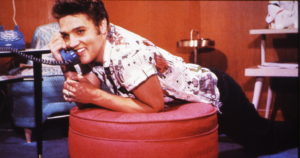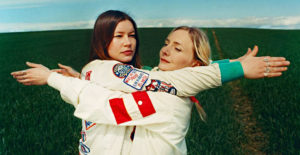Letters pages are the secret history of comic books: a contemporary snapshot that’s almost never reprinted. When Neil Gaiman’s The Sandman debuted in November 1988, it immediately attracted ardent fans who wrote poems, floated theories, discussed literary references (Marlowe, Aeschylus, Milton, Keats) and, very often, emphasised that they didn’t normally read comic books. “Sandman is becoming a whole new mythology — for the Eighties, and beyond,” gushed one reader. “Hooray for Neil Gaiman, the Poe of comics,” wrote another. The eighth issue featured testimonials from horror heavyweights James Herbert and Clive Barker. Tori Amos wrote songs about it; Norman Mailer called it “a comic strip for intellectuals”.
Hollywood cottoned on quickly. By his own account, Gaiman “spent 30 years successfully battling bad movies of Sandman”. In the early Nineties, he was not yet the bestselling author of Coraline, American Gods and The Ocean at the End of the Lane; a writer on Doctor Who; the showrunner of Good Omens; and a celebrity with almost three million Twitter followers who has played himself in The Simpsons and The Big Bang Theory. He could block bad adaptations, but he couldn’t make a good one happen. A two-hour movie was never going to be the right format anyway. Now, at last, there is a ten-part Netflix series based on the storylines ‘Preludes and Nocturnes’ and ‘The Doll’s House’. Allan Heinberg is the showrunner but it feels very much like Gaiman’s baby.
The Sandman became the jewel in the crown of DC’s concerted effort to appeal to older readers. For a young, ambitious British writer in the Eighties, the quickest way to make a splash in America was to dust off a dud from DC’s library of characters and submit it to a radical reinvention, because the stakes were so low. Before he co-created Watchmen, Alan Moore made his reputation by rehabilitating Swamp Thing. Grant Morrison turned D-listers Animal Man and Doom Patrol into cult sensations. Only then would DC trust them with a blue-chip property such as Superman or Batman. Gaiman, a former journalist, hustled his way through the door with a gorgeously strange three-issue series about a bargain-bin character called Black Orchid before making his big pitch.
In European folklore, the Sandman was a sinister supernatural force. “He is a wicked man,” according to an influential 1817 story by ETA Hoffmann, “who comes to children when they won’t go to bed, and throws a handful of sand into their eyes, so that they start bleeding from their heads. He puts their eyes in a bag and carries them to the crescent moon to feed his own children.” This was definitely not the Sandman that Gaiman discovered in a box of comic books when he was a six-year-old living in East Grinstead. That Sandman was Wesley Dodds, a spooky pulp detective from the Thirties who wore a fedora and a gas mask. In the Seventies, Captain America creators Joe Simon and Jack Kirby introduced a new Sandman, an immortal who carried a pouch of dream dust and was assisted by two nightmares called Brute and Glob, but his skintight red-and-yellow costume looked lousy and Gaiman wasn’t a fan. “Still,” he wrote in an essay in issue four of The Sandman, “there was something fascinating about the character. Somebody who lived in dreams… it had potential.”
Gaiman pitched the idea of reviving Sandman to the visionary DC editor Karen Berger in 1987 and he was surprised when she went for it, with one stipulation which turned out to be a blessing: “We’d like a new Sandman. Keep the name. But the rest is up to you.” Gaiman began with the image of a thin, pale man trapped in a glass cell, plucked details of the Twenties “sleepy sickness” epidemic from Oliver Sacks’ Awakenings, and worked out a plan. “I was imagining a comic that wasn’t strictly horror, wasn’t fantasy, wasn’t a super-hero title, but was a strange amalgam of all three,” he wrote.
The superhero stuff quickly fell away. Other DC characters popped up occasionally, but then so did Shakespeare, Robespierre and Mark Twain. The Sandman isn’t a crime-solving guy in a costume; he’s Morpheus, the emperor of dreams, and he looks like a cross between an elongated Robert Smith and, well, Neil Gaiman. His sister, Death, a sparky goth, resembles a Cure fan’s ideal girlfriend. Siblings, Delirium, Desire, Despair, Destiny and Destruction, complete the dysfunctional pantheon.
Horror, though, was very present in the early issues, from the lurid, distorted artwork of people such as Sam Kieth and Kelley Jones to storylines about serial killer conventions and black magic. The first advertisement for the series misquoted The Waste Land: “I will show you terror in a handful of dust.” The sixth issue, ‘24 Hours’, scarred me for life with its nightmarish stew of sex, violence and madness, which is only slightly diluted in the TV version. Whether it was because Gaiman was evolving as a writer, or because he sensed what his ballooning readership really wanted, the horror subsided and the mythological elements took precedence — but realism mattered, too. As Alan Moore testified: “His best effects come out of people or characters or situations in the real world being starkly juxtaposed with this misty fantasy world.”
Gaiman had modest hopes for the series. “I figured at issue eight they’d phone me up and say: ‘Well, minor critical success, major commercial failure. You’ve got four issues to wrap it up!’” he recently told The Guardian. “Then I’d be done. That would be The Sandman.” By then, though, it was outselling all its competitors in the mature-readers market, in part because it attracted an unprecedented number of female readers. The series won award after award while the collected editions hit the New York Times bestseller list. By the time it ended, in 1996, it was outselling Batman and Superman.
At that point, DC did something that comic-book companies never do: it pulled the plug on a hit series because the original writer bowed out. Without Gaiman, there was no The Sandman. Although he later wrote two spin-offs, Endless Nights and Overture, The Sandman’s reputation as the comic book for people who don’t read comic books (they called them graphic novels) doubtless benefited from his subsequent transition into novels, screenplays and children’s books. As Grant Morrison observed in his book Supergods: “A confident and clever young man with a plan, Gaiman carefully polished and promoted his brand while so many of us were spending our money on drink and drugs and acting as if it would always be this way, always this easy.”
Apart from Gaiman, the only contributor to all 75 issues of The Sandman was cover artist Dave McKean, who specialised in multimedia collages. On a narrative level, the whole series was also a collage: Gaiman exploited the licence of dreams to tell myriad stories, often loosely connected. Multi-issue arcs were punctuated by one-off tales about a man who lives forever, a blocked novelist who enslaves a muse, the first performance of A Midsummer Night’s Dream, or a conspiracy of cats. Readers grew accustomed to being suddenly plunged into ancient Rome, Elizabethan England or actual Hell. Characters came and went with amazing rapidity; sometimes Morpheus didn’t appear at all. The Sandman overflowed with ideas. In issue 17, the one about the muse, Morpheus punishes the novelist by cursing him with so many story ideas that he loses his mind and babbles them to strangers. Even those thrown-away concepts have legs: “A city in which the streets are paved with time… A man who inherits a library card to the library in Alexandria… An old man in Sunderland who owned the universe, and who kept it in a jam-jar in the dust cupboard under the stairs…”
The Netflix adaptation is, therefore, a giant swing. By following the comic book so faithfully, the series replicates that radical narrative experiment in a medium that is traditionally less friendly towards freewheeling storytelling. This fluidity has its advantages — it’s much easier to book Charles Dance or Joely Richardson if they’re not going to be needed for long — but there’s an awful lot of information to process from episode to episode. The show sensibly bolsters narrative consistency by making the librarian Lucien (Vivienne Acheampong) a regular sidekick and turning the literal walking nightmare the Corinthian (Boyd Holdbrook) into a recurring antagonist, but only up to a point. In television terms, this is more of an anthology show than an epic fantasy narrative, and you’re likely to enjoy some episodes more than others.
Another oddity about The Sandman is that Morpheus (Tom Sturridge) is a hard-to-love protagonist: sullen, earnest, haughty and remote. Karen Berger once said to Gaiman: “Of course, Dream is you.” The writer replied: “No, I’ve got a sense of humour.” Morpheus, for Gaiman, was less a hero than a skeleton key that would unlock any story he wanted to tell. The real energy flows from the supporting cast, notably Kirby Baptiste-Howell as Death, David Thewlis as John Dee and Jenna Coleman as Johanna (formerly John) Constantine. Even as Netflix has pivoted towards big, empty genre movies that seem designed to be watched with one eye on your phone, The Sandman is uncompromising enough to require close attention.
When he began writing The Sandman, Gaiman was 27: that creative sweet spot when you know enough but not too much. “I didn’t know what I was doing,” he told New York in 2015. “And the best part of not knowing what you’re doing is that nobody can tell you not to do something, including yourself. Because you don’t know that it’s a mistake, and not knowing it’s a mistake frees you to do it… I was so very lucky. These days I absolutely know what is possible, and I look at what I did back then and go, ‘How the fuck did that happen?’”
As a co-producer on the Netflix show, Gaiman had the power to rectify any missteps but the diversified casting is the only major change, and Gaiman was always unusually progressive when it came to gender and sexuality anyway. Rereading my old issues of The Sandman for the first time in 30 years, fearing that I would be less impressed, I was dazzled all over again by its audacity and craft. The Sandman was an entirely new kind of comic book. If viewers run with it, it has the potential to be a new kind of TV show, too.
Disclaimer
Some of the posts we share are controversial and we do not necessarily agree with them in the whole extend. Sometimes we agree with the content or part of it but we do not agree with the narration or language. Nevertheless we find them somehow interesting, valuable and/or informative or we share them, because we strongly believe in freedom of speech, free press and journalism. We strongly encourage you to have a critical approach to all the content, do your own research and analysis to build your own opinion.
We would be glad to have your feedback.
Source: UnHerd Read the original article here: https://unherd.com/




